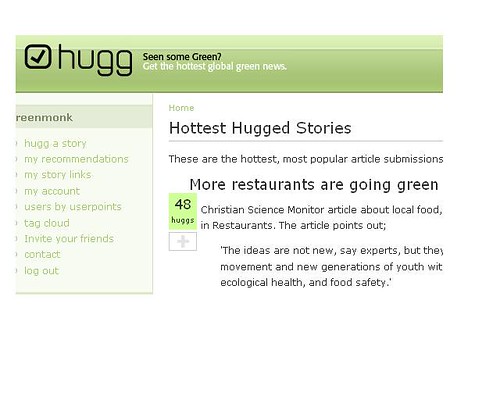continued from Part 1
From The Roots Up
Next up was Donna Young, BT’s head of climate change, the most grassroots-oriented of the BT speakers. What I liked about Young’s approach was that it was neither top down or bottom up, but both. Grassroots environmental advocates were supported by senior BT staff as volunteers. Young clearly believes BT’s staff will play a huge role in further improving its environmental performance. But staff need to be supported in doing so.
Employee participation is impressive. Within three weeks of initiating a company-wide grassroots environmental program, 28 local clubs were in place. BT has set up an internal blogging system (how very Greenmonk) to capture ideas and objectives of the specific carbon-busting club.
“What do people want? Recognition from senior management. If they save huge amount of money for BT they want to see a percentage of that to be spent on more green initiatives.”
Staff aren’t looking for financial compensation for innovative carbon-busting initiatives, they are looking for further investments by their employer.
Of course the real grassroots are BT customers not staff. In March BT developed a web site that didn’t sell anything. it was… a carbon calculator. Another one (yacc yacc yacc)? Young said that while there was plenty of competition in the carbon footprint calculator business, most were aimed at carbon emission offsetting. Young explained that as a Catholic she tends to see offsets as little more than “indulgences”.
Most calculators went to offsetting, which didn’t fit our carbon busting strategy. its about changing behaviour. its about taking action. Its not just about going to confession and saying my hail marys…
I asked Young what experience BT had of fostering grassroots innovation, and how the company supported such efforts. She said she had “stolen” ideas from BT’s mycustomercup challenge, another successful employee-led program. BT plans to interlace green thinking into its broader “new ideas” scheme. If staff at a particular building find a particular way to improve efficiency, how can it be identified and rolled out more broadly? One method is to use internal wikis, to hone and share ideas.
BT and Sustainable Business Services: B2B
“At BT we’re pretty good at measuring things. We know how to calculate a carbon footprint and how to lower it.”
– Chris Tuppen
Of course you wouldn’t expect BT to say anything else, given its push into sustainable business, but you can tell a lot by a supplier by its customers.
- As a public reference Tesco, the world’s second biggest retailer, is as good as it gets. BT is working with Tesco in a number of areas including video-conferencing: every time Tesco moves a meeting from face to face to online it saves 47kilos of carbon, and reduces travel costs. Another very interesting is
- BT Expedite is a division of the company specialising in retail supply chain and logistics, helping retailers understand front end to warehouses. BT worked with OASIS, the woman’s clothing conpany and achieved savings of 20/30% on their supply chain costs; with clear environmental benefits.
BT also claims that its sales model is pull rather than push based, based on its good green reputation. In the US prospects were finding US customers were approaching BT because it was known as being a green organisation. Some wanted to publish carbon footprint for each product and supplier, showing the carbon imprints. BT said this spend was totalled 2bn pounds last year. Customers requiring credentials from suppliers include every UK government IT contract, shoe manufacturers, and soft drinks. Walkers crisps, said BT, deserves particular mention for performing very well in terms of carbon reduction and supplier certification.
BT and Sustainable Business Services: B2C
So what about more innovative services for consumers?
One approach for BT to address consumers is in partnership with electricity companies. Between 4pm and 6pm a lot of BT infrastructure comes off the National Grid and instead BT uses local generators, because the cost of energy peaks as people come home for dinner, have a cup of tea, turn on the telly and put the dinner on. The key way to get people to reduce power demand in the home is with education, although moving from always on to always available equipment will also be important. This is one area BT’s strategy needs significant work. The broadband and wifi routers and set top boxes the firm sells to its customers are designed to be always on. Its one thing to talk about putting pressure on suppliers, its quite another to enforce the mandate and pass on the infrastructure to customers.




